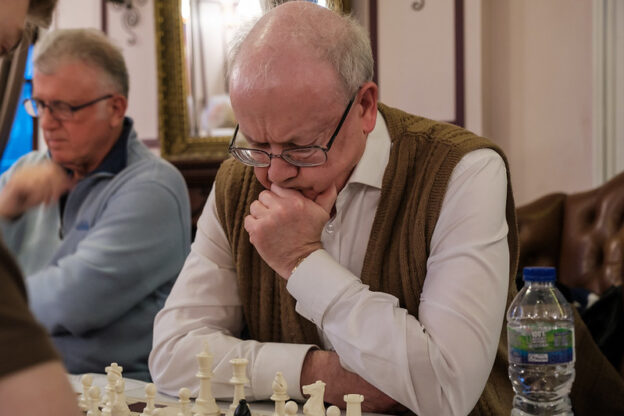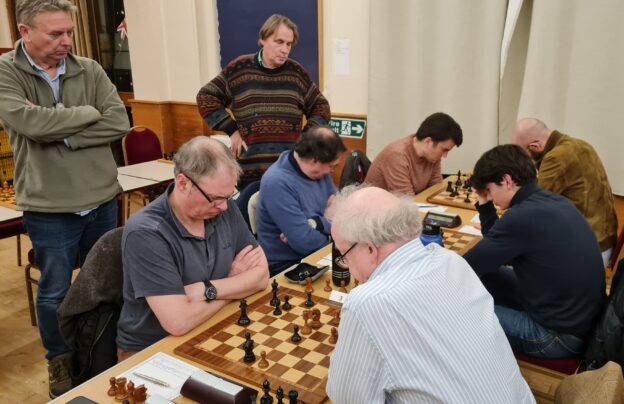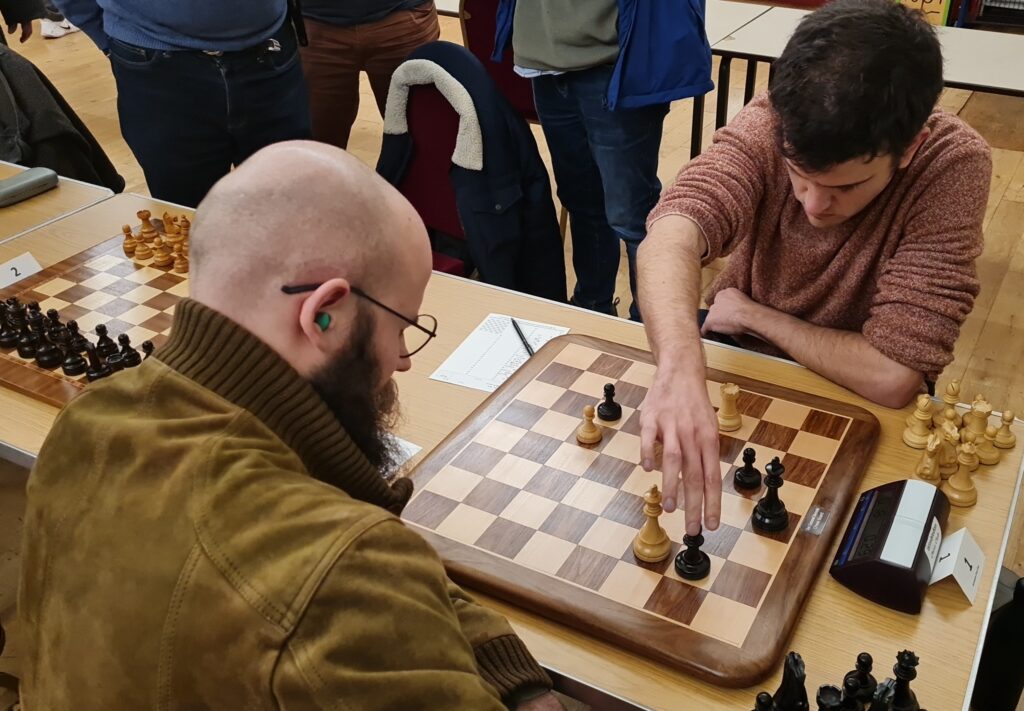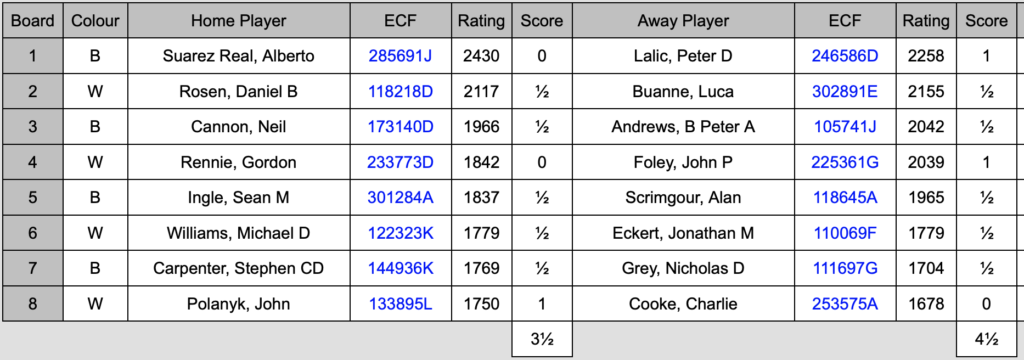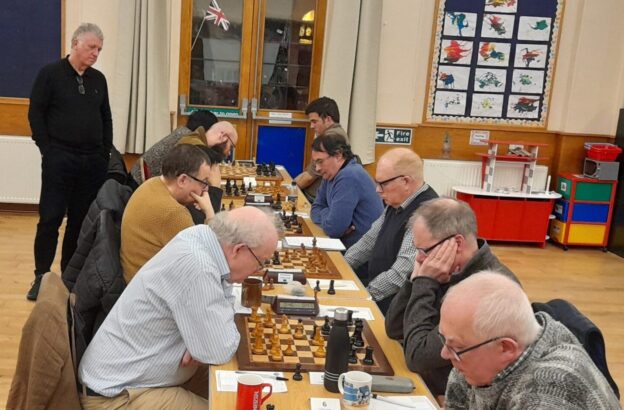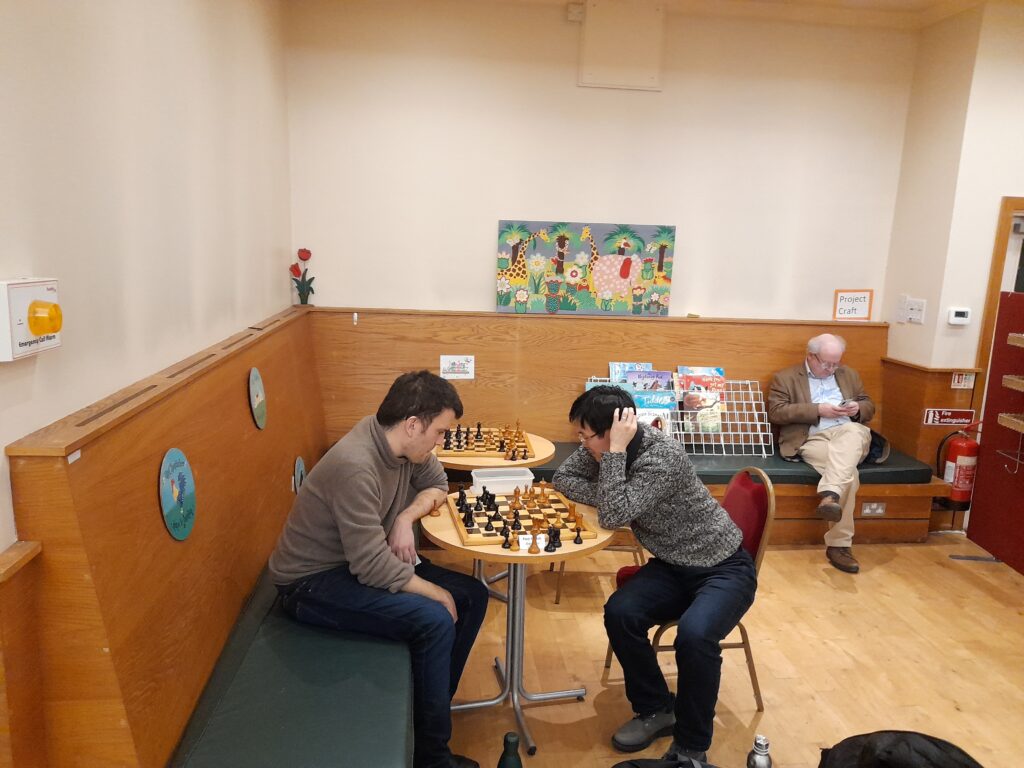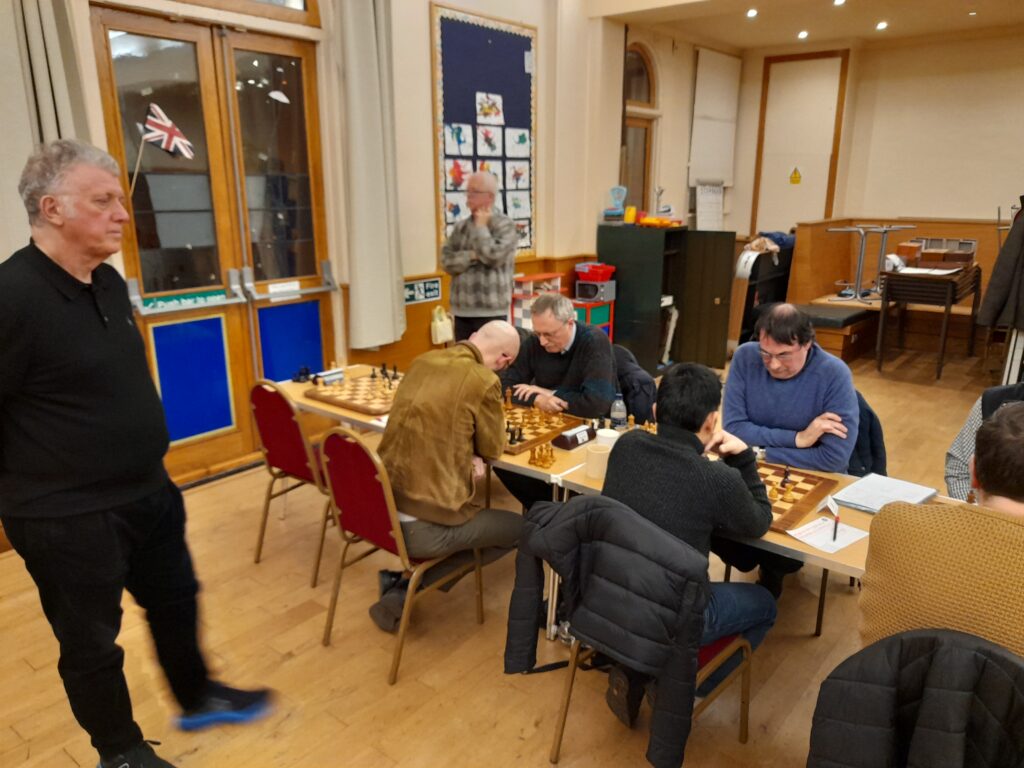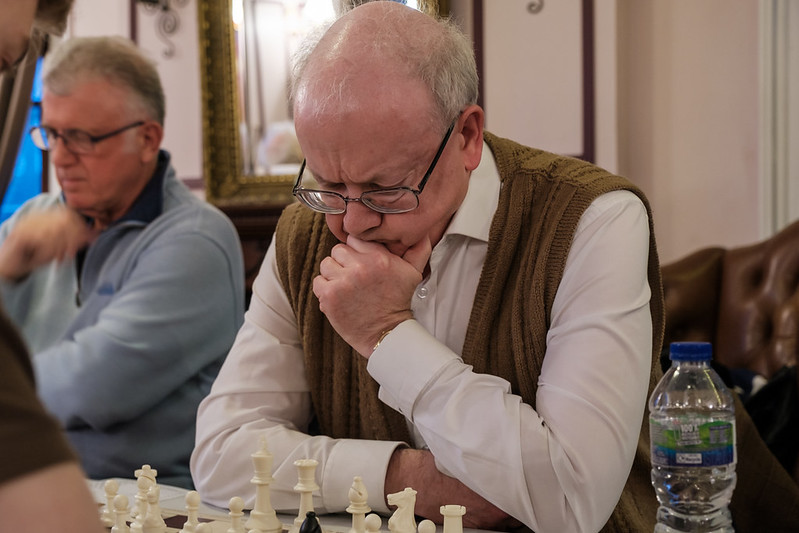The second of an occasional series in which Kingston members and friends of the club choose the player who has most inspired them. Illustration by Theo Esposito Bennett
Like many partially prepared exam students and politicians, my entry into this series on favourite players answers the question I choose to answer, rather than the one suggested by the examiner. As a child (in chess terms) of the early 1970s, I admired Bobby Fischer, who seemed to play the best and most exciting games, and broke the apparent monopoly of the eastern bloc on top-level chess. But he was not the player, or rather writer, who most strongly influenced my development.
Svetozar Gligorić was born in Belgrade in what had recently become Yugoslavia in 1923. He learned to play chess at the age of about 11 from a boarder in his mother’s house. The family was poor, and his mother disapproved of chess, so he carved his first set with a razor blade out of pieces of cork. During the second world war he joined the Yugoslav partisan army, and ended the war – when he was still only 22 – with the rank of captain and two medals.
He became a journalist, both as a writer, in Serbo-Croat and later in English, and as a broadcaster for Radio Belgrade. Despite his professional career, he was able to become a grandmaster in 1951. He won the Yugoslav championship on 12 occasions, and reached the Candidates tournaments in 1953, 1959 and 1968. Although he progressed no further in world championship cycles, he did have some individual successes against the elite: +4 -6 =8 v Fischer, for example, and +6 -8 =28 against Vasily Smyslov, a near contemporary. Gligorić was known for sportsmanship, sympathy and integrity. He was a rare player able to have good relations with Fischer, perhaps after showing kindness towards the raw 16-year-old at his first Candidates in 1959, and in 2019 Fide named its fair play award after him. He died in 2012 in Belgrade, aged 89.
How did Gligoric influence my chess? In my early teens, I had very few chess books, and none on openings. So unsurprisingly, although I had been primary school champion of Southampton at the age of eight, I improved very slowly by today’s standards. Hampshire was still in the Southern Counties Chess Union in the early 1970s (it had moved to the West of England Chess Union by 1974). Rather strangely, it happened that the 1971 SCCU championships were held in Bournemouth, a remote corner of the southern counties, which enabled me to tie for the under-14 championship with a rating of not much over 1600 in modern terms; all the far stronger London juniors of the same age were presumably deterred by travel distance and accommodation costs.
My prize was Gligorić’s Selected Chess Masterpieces, a collection of his monthly articles for the American periodical Chess Review (his name is spelt Gligorich in the book, but I prefer to use the more common spelling). With very few chess books to read, I devoured this new one, and soon realised that it was an unusual and remarkable book.
Gligorić was noted for his own deep expertise in the King’s Indian Defence, but he brought the same thoroughness to the opening phase of all the games he presented. He would comment on individual moves by reference to multiple games played in other recent tournaments, which for me at that age was a more effective way of learning mainstream lines than seeing a specialist opening book with tabulated variations; my memory followed the logic of the games.
Sometimes these annotations were taken to extremes; he gave 1. e4 an exclamation mark in Larsen-Portisch, Porech 1968, commenting: ”In the middle stage of the match, Larsen came to the conclusion that he could not do much against Portisch’s excellent preparations for the Queen’s Gambit. So here he starts with the king pawn once more in the most important game of the match, even though the open systems are not his forte”. And he commented extensively on each of White’s first five moves in a game starting 1. e4 e5 2. Nc3 Nc6 3. Bc4 Nf6 4. d3 Na5 5. Nge2 Nxc4. In the very next game in the book, Keres-Schmid, Bamberg 1968, he gave Keres, who normally played 1. e4, an exclamation mark for 1. d4, to avoid Lothar Schmid’s French defence. I remember thinking that even I could earn an exclamation mark or two if that was the standard.
This was the peak period for the poisoned pawn variation in the Najdorf Sicilian. Juniors like me were imitating Fischer and playing it with either colour. So I very much enjoyed the following two games from the book, played around six months apart. In the first game, Fischer, who had already won the tournament, came unstuck against Efim Geller, in a game played in Monte Carlo in 1967.
A few months later, IM Rajko Bogdanovic repeated the line for Black against Mikhail Tal, who was ready with an improvement.
There was real excitement for me – we might nowadays call it a sense of jeopardy – in the idea that in these very sharp positions the evaluation was unclear (in the days before computers, of course), and new discoveries could be made which would change the result. But what if Black did not go for the poisoned pawn? Gligorić showed a brilliancy in ostensibly a quieter line.
Here is the 1959 Candidates game cited by Gligorić. Fischer was only 16 at the time, but even so, it confirms that Gligorić was no mug. Characteristically, he was too modest to mention in Selected Chess Masterpieces that he had won the game, although g4 would have been less likely to become part of the canon had he not done so.
Those sorts of games appealed greatly to me. So when in May 1974, in a tournament at Bournemouth, by now rated about 1850, I sat down opposite Marshall Thompson, then the champion of Hampshire, rated 2180 having been 2200 for several years, I knew what to do when he played down the Parma-Bogdanovic line.
That was the most exciting game I had ever played. The time limit was 42 moves in 1¾ hours, and I recorded that at the end my opponent had half a minute remaining for seven moves, while I had less than 10 minutes. That was time trouble by my standards at that age, and I recall in my excitement banging the coffee cup at my right hand rather than the clock at my left, to the mirth of the crowd of spectators which had gathered round the board.
The round was played in the morning, and as a hungry teenager I raced off to get some lunch before the afternoon round. When I arrived back in the tournament hall half an hour later, I found Thompson still analysing the game with the remaining spectators. The rest was anti-climax. In the afternoon, I played a boring draw on the black side of an English with a 1750-rated player. And it was infuriating that Thompson’s grade had just slipped below 200 (in old money, 2200 now). It was nearly six years before I managed to beat someone of that strength, and by then I was 2100 myself so there was not the same underdog triumph about it.
Unfortunately, by the mid-1970s, perhaps influenced by a crushing win by Spassky against Fischer in the 1972 match, fewer players chose the Najdorf with Black, and players on the White side were playing less critical lines against it. In more humdrum lines the Gligorić book was less help, and my progress stalled. But its impact at a time when I was starting to play stronger adult opposition was unforgettable.

